How to grow bonsai from seed at home?

Today, flower growers have a large selection of crops that can be grown at home. The art of growing a copy of a tree in miniature "bonsai" stands out. This can be done by any grower using the seeds of the selected crops and, of course, with proper plant care.
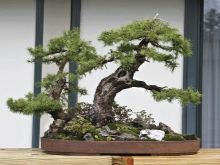


Growing techniques and styles
This art comes from China, for the first time such work was undertaken by order of the emperor, who wished to recreate the miniatures of his empire not only in the form of buildings, but also trees. According to the religious beliefs of Buddhists, a master who was able to create small copies of plant cultures was equated with a deity. Today, a number of techniques and styles are used, focusing on which, the masters work on the creation of bonsai. Two cultivation techniques are considered the main ones: traditional and special.
Traditional
She, in turn, allows gardeners plant crops in the following styles:
- straight trunk;
- informal straight;
- style, assuming the presence of two barrels;
- cascade and half-cascade;
- bonsai with a protruding rhizome;
- oblique and literary;
- group composition;
- broom style.
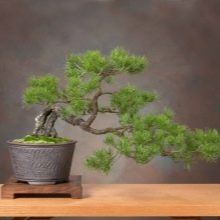
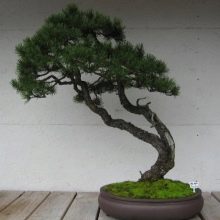
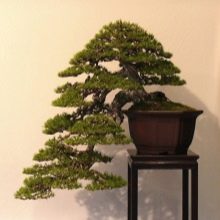
Special
To germinate crops, adhering to the principles of a special technique, is preferred by true connoisseurs and professionals who specialize in creating miniature copies of plants. The styles used in this direction can be as follows:
- "Common roots";
- bonsai of forest form;
- landscape;
- growing on the rock and in the wind.
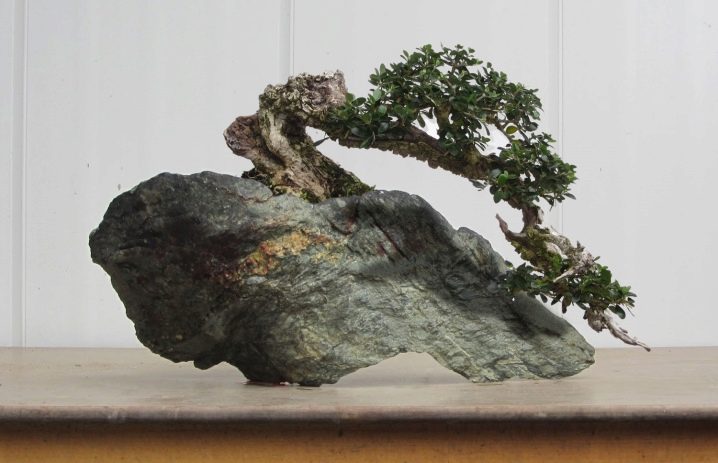
Which tree seeds are suitable?
Japanese compositions with dwarf crops can be created with almost any tree plant that will suit the taste of the customer or the gardener himself. Since bonsai has been grown all over the world for quite some time, there is a whole list of the most popular crops, the cultivation of which in miniature allows you to create beautiful compositions.
Among exotic tree-like plants, it is worth highlighting acacia, wisteria, various types of ficuses, as well as myrtle and boxwood.
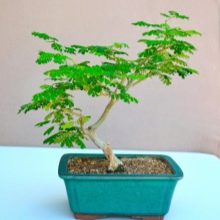
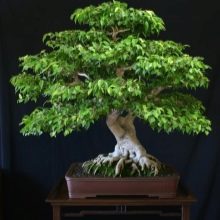
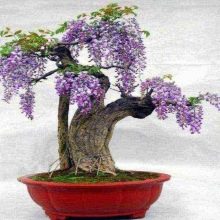
Russian flower growers very often use apple, birch, maple, Japanese cedar. It will be possible to germinate bonsai from seeds at home if you use planting material from conifers in the composition, for example, spruce, pine, including Pinus parviflora, cypress. Such cultures in a dwarf form can organically fit into any interior. For some crops, there are guidelines for their size:
- acacia, wisteria, pine - 100-130 centimeters;
- linden, ash, beech and oak - 60-100 centimeters;
- maple, birch, hazel - 20-30 centimeters;
- juniper, spruce, irga - 10-20 centimeters.

Planting material is recommended to be purchased only in specialized stores or nurseries, so that the upcoming work will bring the desired result. However, buying seeds is not the only option for making a DIY bonsai. Very often, flower growers collect seeds in parks or botanical gardens, where a lot of beautiful and healthy plant specimens grow.
Processing and germination
Before rooting tree seeds, a number of preparatory measures should be taken with purchased or hand-picked material. It is possible to germinate a culture only after mandatory processing.Summer will be the optimal time for seed rooting, which means that preparations for planting should be done in advance in spring or autumn. In order to plant healthy plants, experienced growers stratify the seeds. This method allows you to recreate winter conditions for seeds that will temper young crops. There are several options for stratification of planting material.

Cold way
This treatment will be needed for planting material, which still needs to ripen before rooting. This applies to thuja, spruce and pine. The essence of the method consists in soaking the specimens in water at room temperature, followed by keeping in the refrigerator. Such manipulations artificially create a sharp temperature drop, which often occurs in natural conditions.
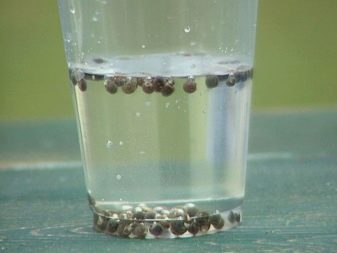
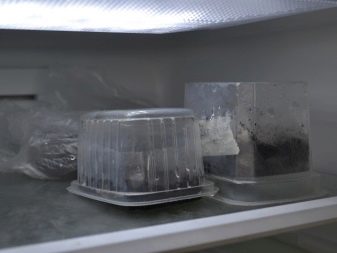
Warm stratification
A more gentle treatment, the purpose of which is to awaken the plants. In order for the seeds to hatch faster, they are placed for a while in a container with warm water or in a humid environment.
Combined processing method
The method of work required for planting material of crops that stand out with a slow growth rate of seedlings. This applies to sakura, maple and cedar. In this case, the grower will need to alternately place the seeds in the heat, and then in the cold. In the latter case, they must be kept in a warm liquid before that.
This option is most often used for growing miniature trees using the bonsai technique.
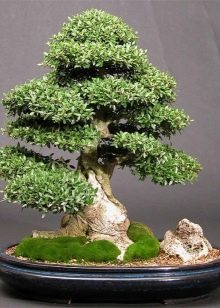

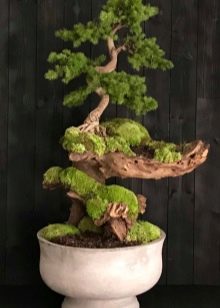
In addition to stratification, seeds also undergo a mandatory disinfection procedure to reduce the risk of crops becoming infected with fungal diseases. Most often, a manganese solution is used to work in this case. Disinfection can last from 5 to 15 days.
After the material has been processed and disinfected, it is placed in a humid microclimate in order to soften the upper shell of the grains. For these purposes, wet sand is used, into which the grains are deepened. The container with them must be covered with polyethylene, leaving the seeds in this state in a warm place protected from light for 2-3 months. Before rooting the grains, they need to be removed from the sand by keeping them in water at room temperature for 2-3 days.
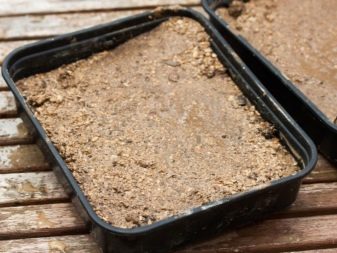
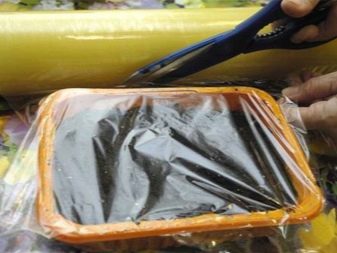
Selection of soil and pot
To grow a beautiful bonsai on your own, you should carefully select not only the material for planting, but also choose the right pot. Seeds should first be germinated in small peat cups, several crops for the composition can be rooted in a flowerpot with drainage. Today bonsai is grown in pots, which can vary not only in shape but also in depth.
Miniature crops look equally beautiful in oval, rectangular or round containers. The containers can be deep or flat. When choosing a pot, it is necessary to be guided not only by personal taste preferences, but also by the rules for placing plants. Trees that will grow with a slope need a stable container to keep the pot from falling over. The best option would be deep containers made from heavy raw materials.
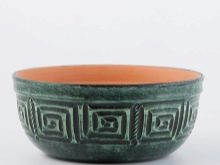
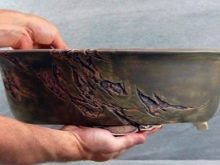
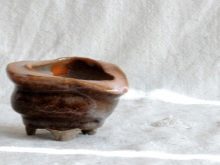
The color design of the bonsai pot can be any, the external attractiveness of a dwarf plant can be emphasized by bright colors and calm monochromatic products.
The design of the container will be more correctly selected depending on the style of the live composition in it. Bushy trees will look great in flat and wide containers. Cascade crops are usually grown in narrow and tall flowerpots. Regardless of the color and shape, before rooting plants in a container, it should be disinfected by treating it with boiling water, which will kill bacteria and fungi, if any, on the material.
For miniature crops, it is also necessary to pick up the soil. As a rule, growers will root the sprouted seeds in a special potting soil mixture designed for bonsai.It is not often sold in gardening shops and is called "akadama". The soil is rich in nutrients and therefore very heavy. In addition, the soil is distinguished by a high level of humidity, as well as excellent aeration. Pure soil is used very rarely.
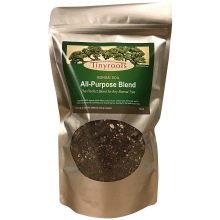

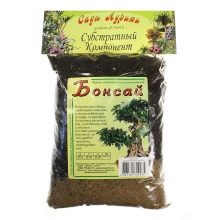
Often, the soil for miniature trees is prepared independently by mixing a nutritious substrate with granular clay, sand and humus. The proportions are selected depending on the type of plant being grown. Based on the varieties of crops, the soil can be as follows:
- for deciduous trees: 7 parts of turf, 3 parts of sand;
- conifers: 4 parts of sand and 6 parts of sod soil;
- flowering miniatures: 7 parts of turf, 3 parts of sand and 1 part of humus.
In addition to collecting planting material for bonsai on your own, you can also make the soil for it yourself. Sod land is easy to find in a meadow, taking for your needs land from the middle layer, which will be more suitable for culture. Before use, it must be cleaned of residues of other plants and weeds, and also sieved through a sieve. As for the rest of the components for preparing the substrate, coarse-grain sand will be needed, since it will provide the earth with proper air circulation, and will also allow it to retain moisture for a long time. Humus is sold at any flower shop. Before using the resulting soil mixture, it must be disinfected by calcining. For these purposes, you can use a kitchen oven.
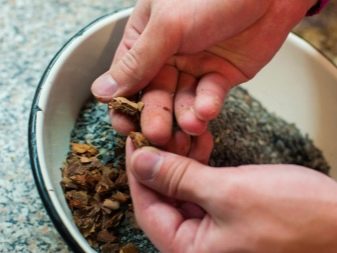
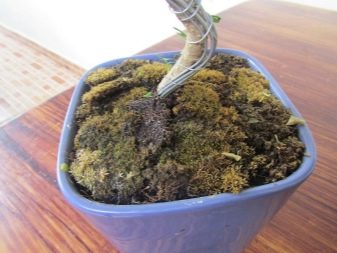
Landing
Bonsai seeds can germinate for several years, however, proper planting will be the key to obtaining a beautiful and healthy culture. Work on rooting a culture in a pot is best carried out in the summer months, as a rule, the planting material, previously rooted in the sand, will already be fully prepared for transplantation. As practice shows, in summer, seeds will begin to form roots much faster, so the culture will develop faster.
The pot is filled with prepared soil; you should not fill the container to the very top. It is necessary to leave about 3 centimeters, at this level the processed seeds are laid out, which must be well pressed with a piece of wood. Then they are sprinkled with the remaining earth, which is recommended to be tamped well. Some growers additionally cover the pot with polyethylene, making several holes in it for air flow.
When shoots appear, the covering material is removed, and the pot is placed in a bright and warm place in the room.
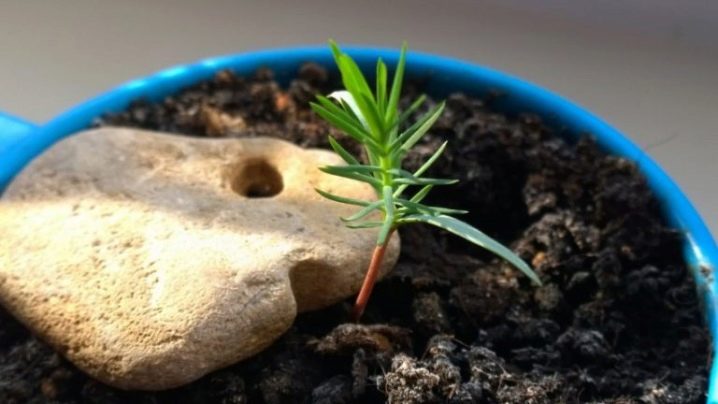
Care
Work related to the care of miniature crops is reduced to regular moistening of the soil and airing, the soil in the pot should always be moist. To avoid root rot, which is a fairly common problem due to the small size of the pot, flower growers water in several ways. In the first case, it can be irrigation of the crop with water. For these purposes, it is recommended to use rainwater, which needs to settle for 2-3 days before watering. Moisten the tree from a special teapot. The second option is to immerse the pot in a large container filled with water. The culture should be in it for about 2-3 minutes.
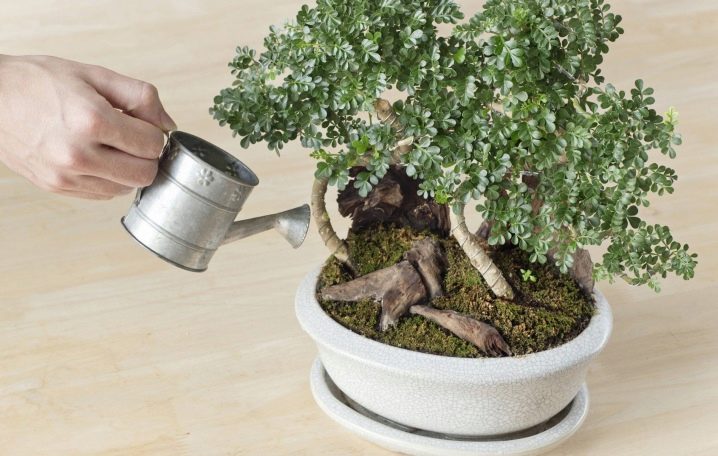
The pot before the emergence of shoots should stand in a shaded place, at an air temperature of about +16 C. With the appearance of shoots, plants will need sunlight for growth, then it is recommended for bonsai to maintain room temperature. When the sprouts are 2-3 months old, the florist will need to dive the trees. This is necessary to stimulate crops for further growth and development.
Bonsai maintenance also involves additional plant nutrition, especially in summer. For these purposes, it is recommended to use complex store formulas, adding them to the pot in small portions.
During the formation of the crown, it is necessary to fertilize bonsai 2 times a month, and monthly algae-based fertilizing should also be applied.
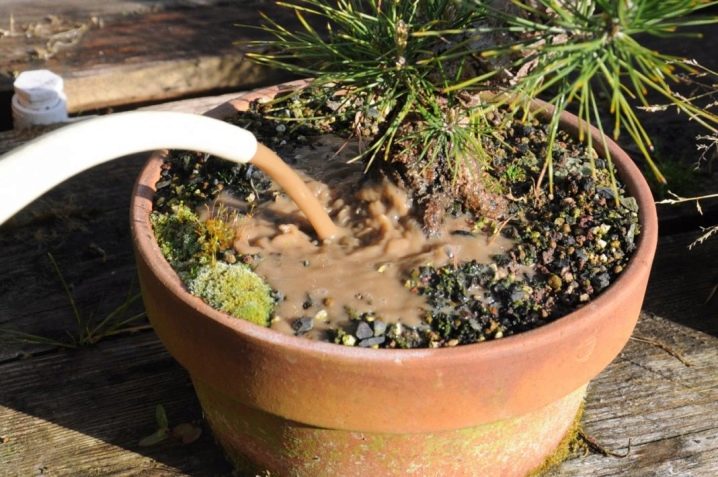
For the health and growth of miniature crops, phosphorus, potassium and nitrogen are very important. The latter is necessary for the productive growth of green mass. Phosphorus is responsible for the growth and division of plant cells, including the root, and it also has a beneficial effect on the immunity of crops. Potassium will help plants fight bacteria and microorganisms, in addition, the microelement will help plants bloom. When placing a pot with a culture indoors, you should avoid direct sunlight on young trees. Ultraviolet light can provoke a burn and lead to the death of the plant.
The main task of the grower in the process of growing miniature trees is the process of re-rooting. The essence of this important work is to shorten the root shaft by two-thirds. In order to enhance the growth of the rhizome, some crops are given hormonal injection. Typically, the plant will be ready for such manipulations at the age of 3 months. Culture shaping begins when the tree reaches several years.
How to grow bonsai from seeds, see the next video.































The comment was sent successfully.